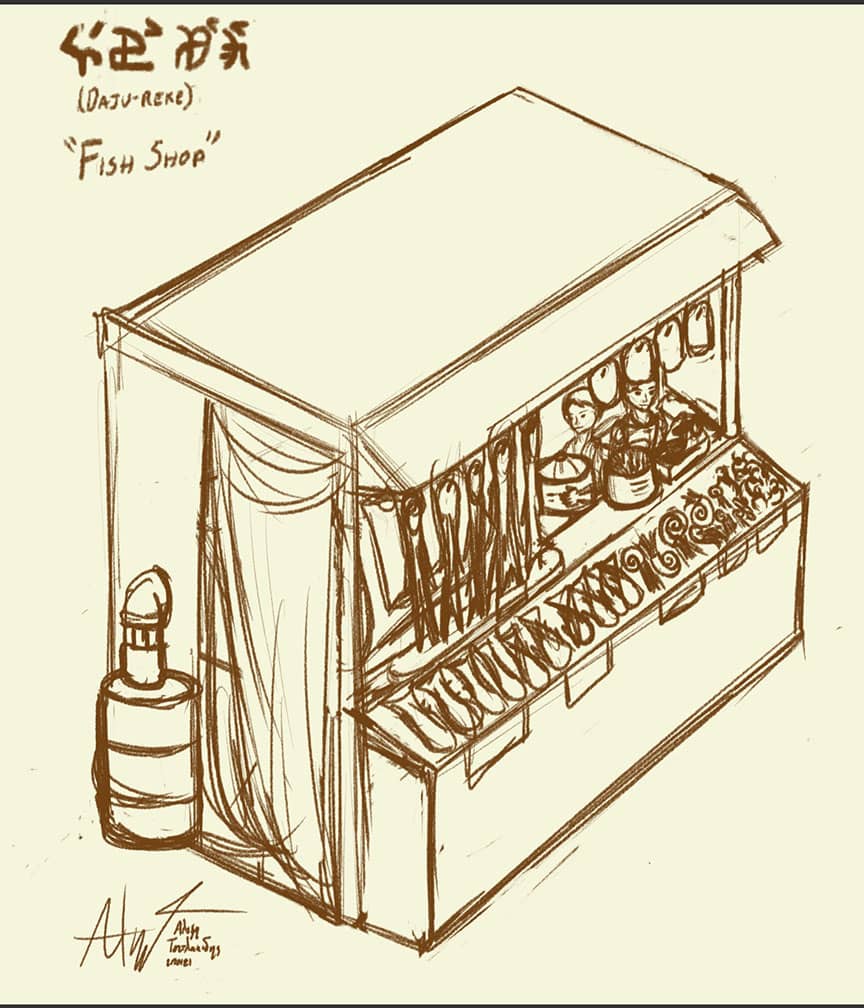Neibara
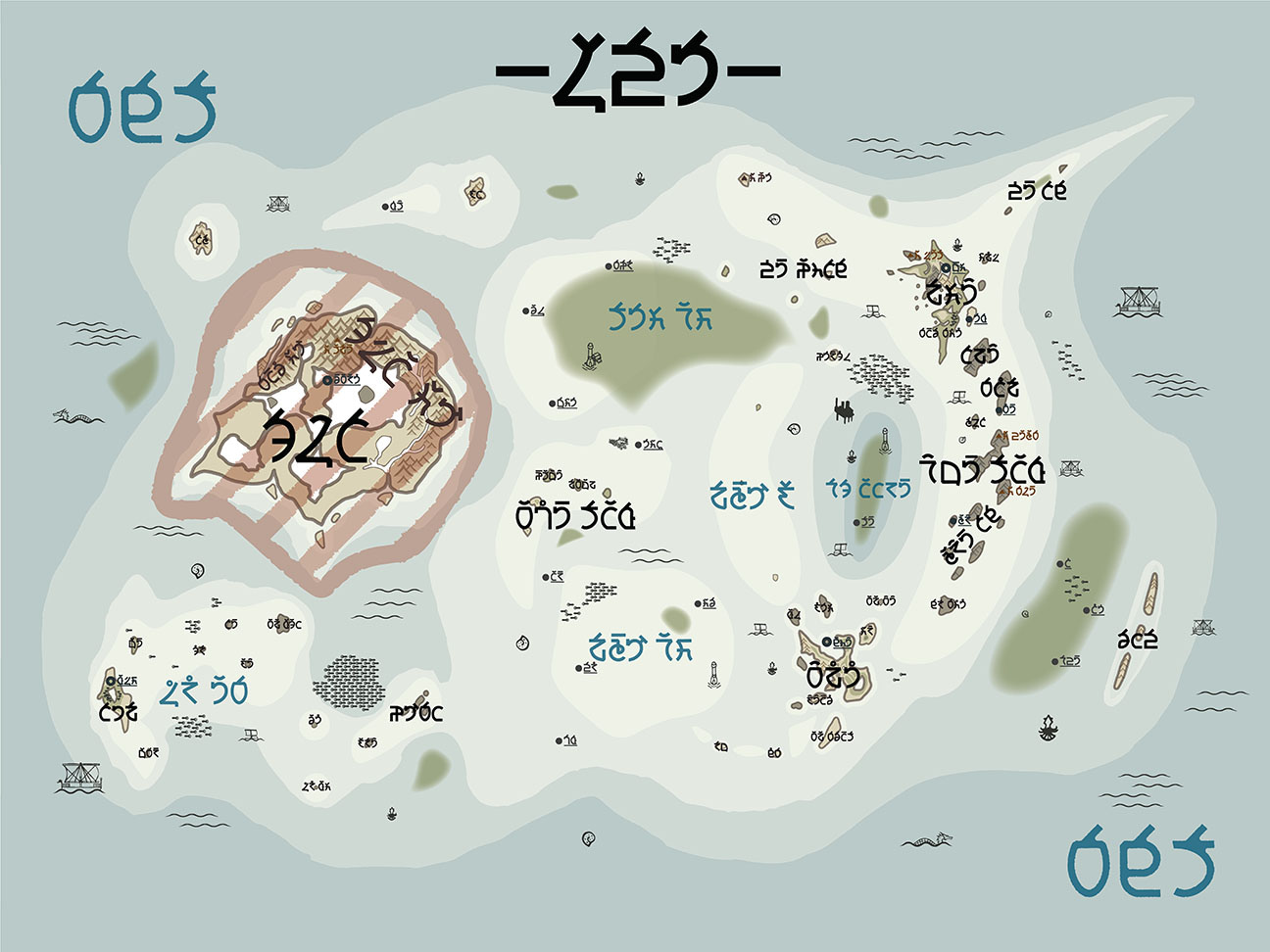
The map of Neibara, written in Wanakti—put up on display at the DCDT
2019
Detroit Center for Design + Technology (DCDT)
Detroit, MI, United States
Neibara, meaning “World of the Nine (Deities)”, is the home of the Naukratis civilization, located many light-years away from Earth.
Though the surface of Neibara is dominated by the sea, the residents of this water-world thrive on natural land masses and man-made islands—constructing settlements that vary from small villages to metropolises.
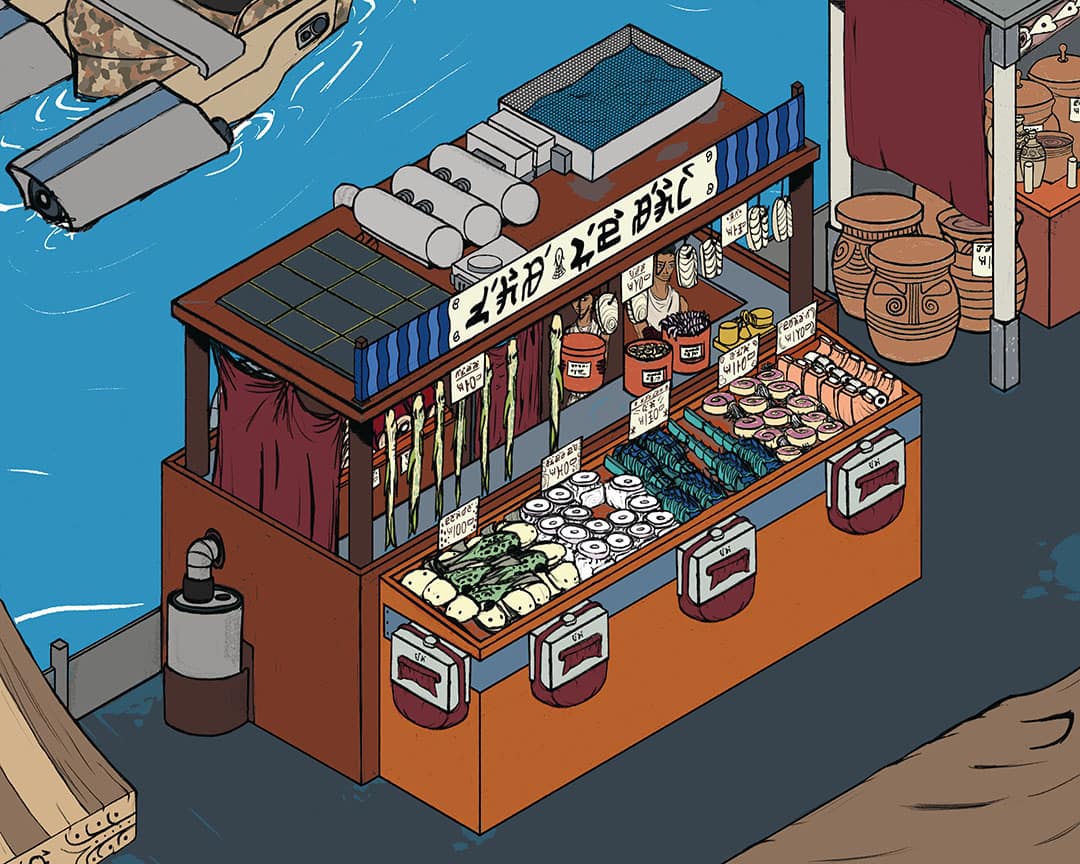
A conceptual drawing depicting a fish market on an artificial island
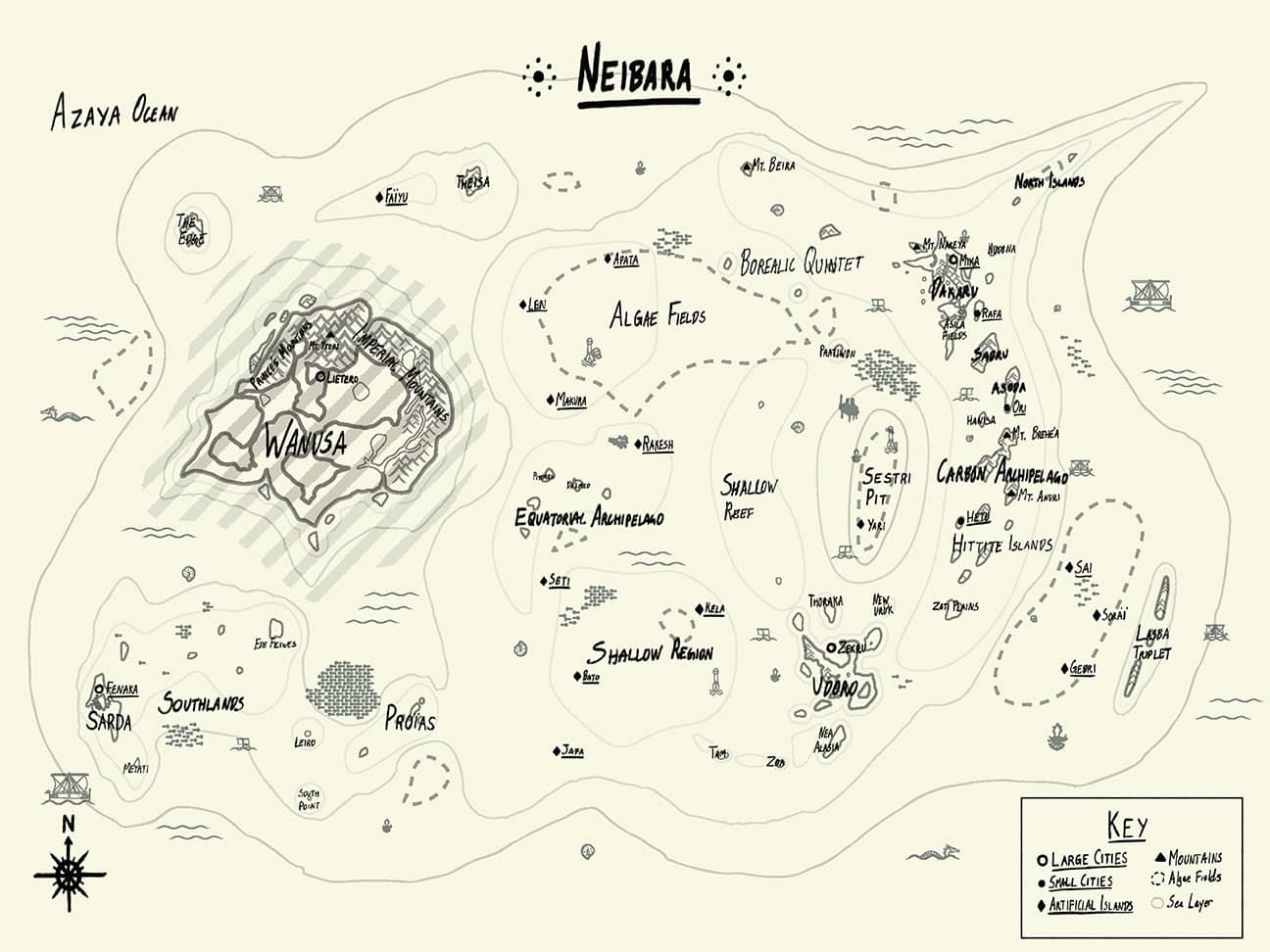
The Map of Neibara translated in English, from the Codex Naukratica
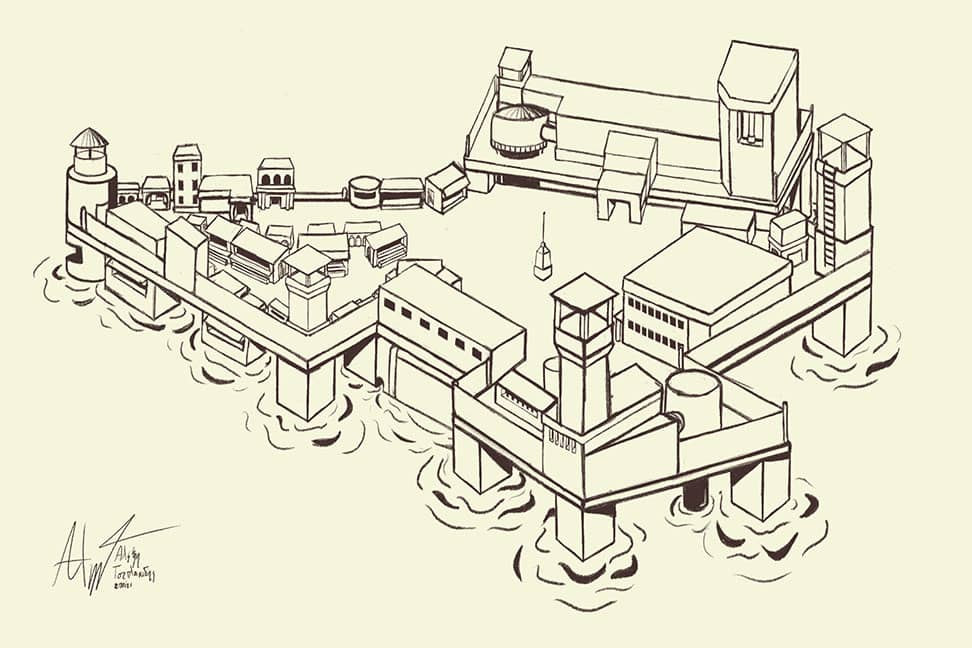
“Rakesh”: a depiction of one of the many artificial islands within Neibara
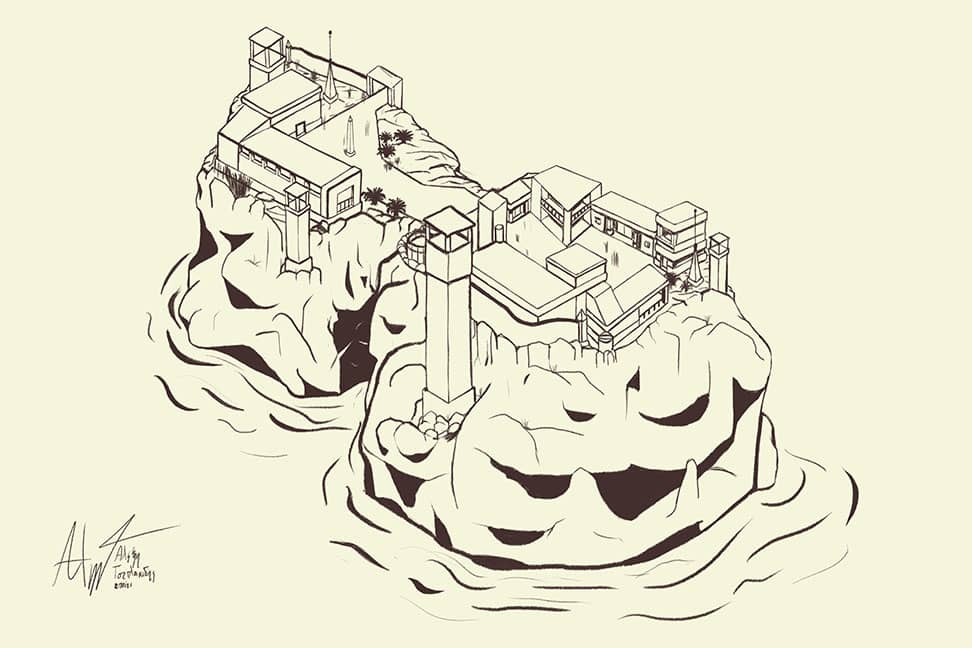
“Pratiwon”: A depiction of a settlement augmented to a small geological formation
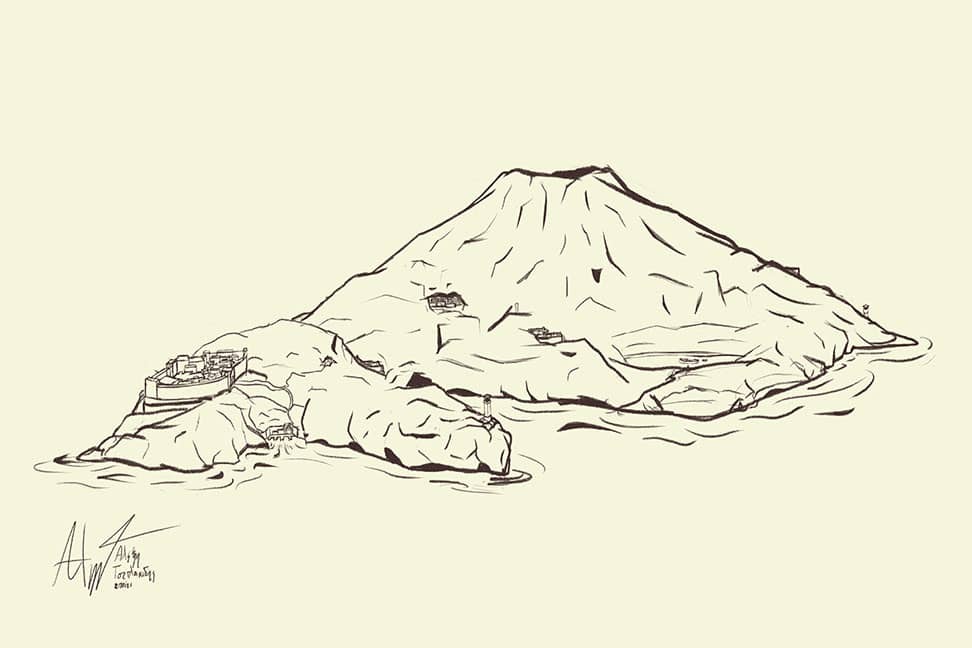
“Ede Feiwes”: A depiction of a large island home to many settlements within Neibara
Design Process
Being a blue planet where artificial islands and marine empires reign supreme, one influence behind Neibara is the film Waterworld.
Initially, the world of Neibara was going to be nothing but a series of artificial islands on a blue planet with very few natural island formations and even fewer plants—very reminiscent of Waterworld.
This was changed because it would make the design of the map rather bland and it would make sense for Neibara to feature flora and natural geological formations (i.e. continents and islands). After all, if humans are among the inhabitants of the world, how will oxygen be produced?
The name of Neibara was inspired by “Nibiru”, the hypothetical home of the Anunnaki (seven deities) of Mesopotamian mythology as proposed by Zecharia Sitchin, as well as a way of vocally incorporating the Wanakti term for nine (nei), a number venerated by the culture of the Naukratis Civilization.
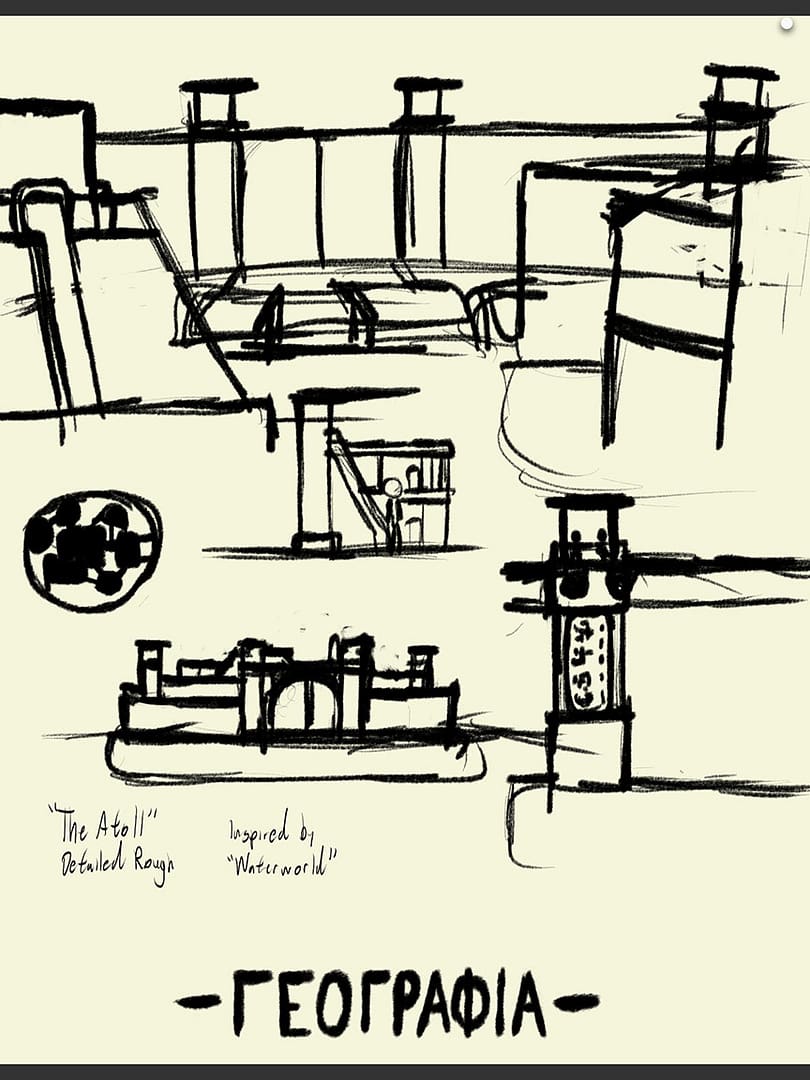
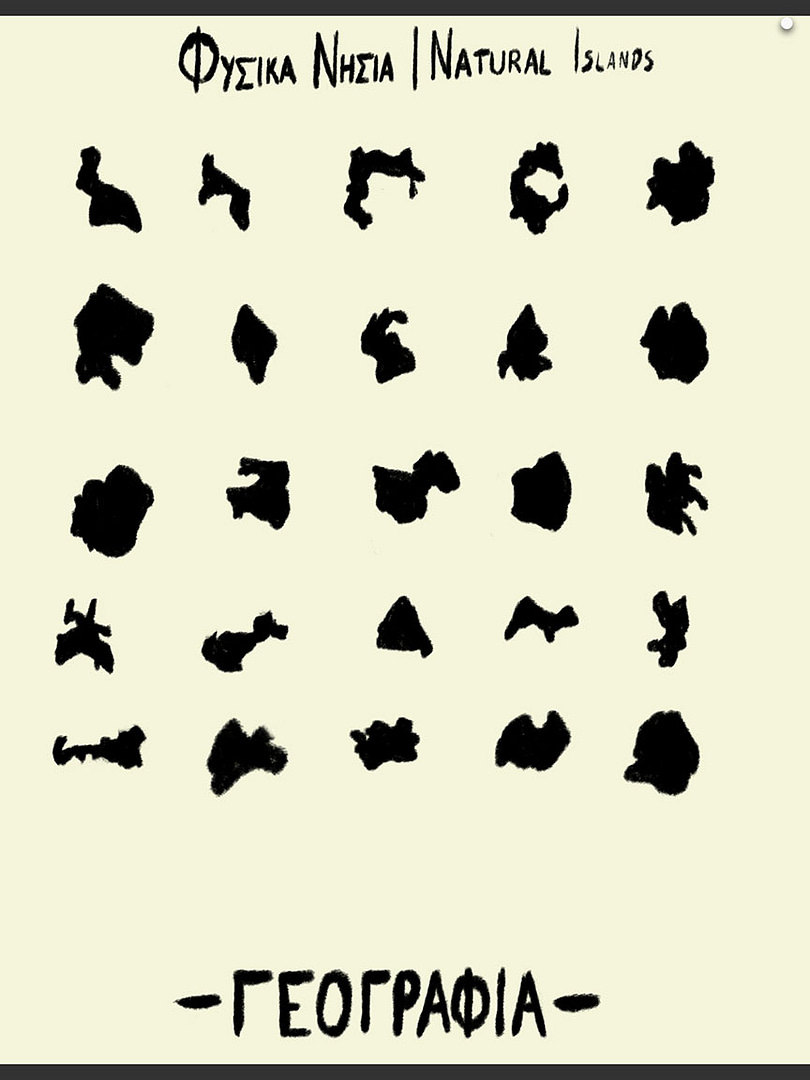

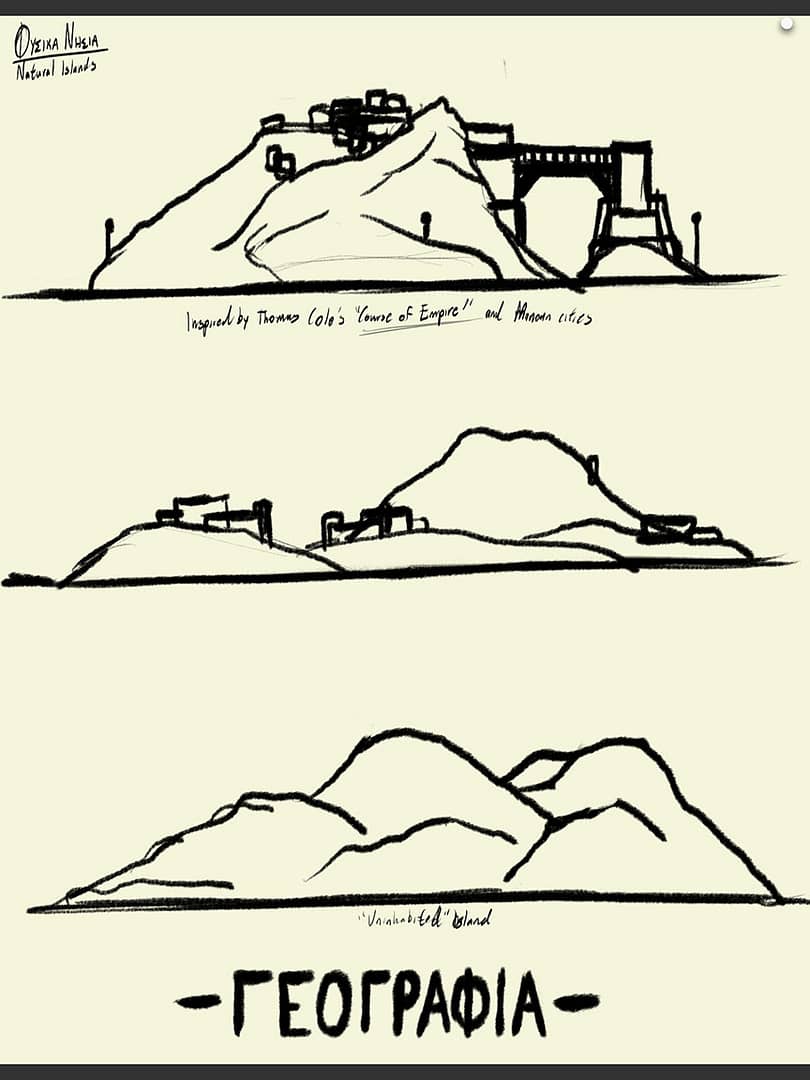
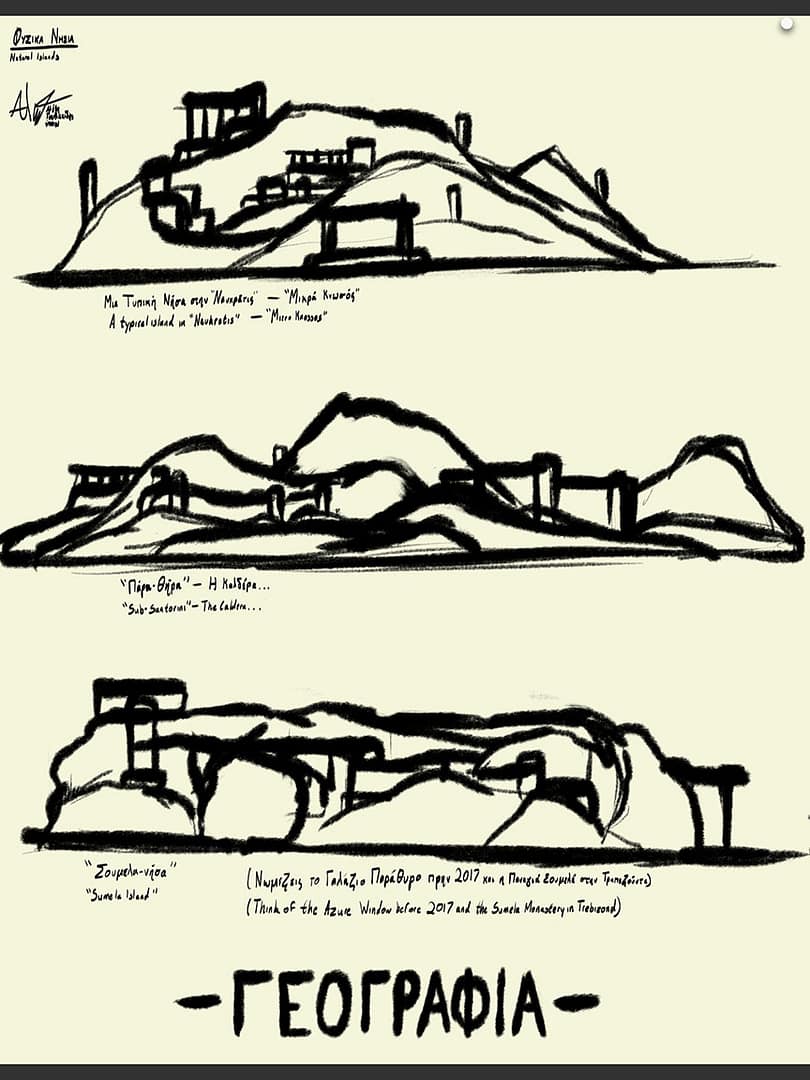
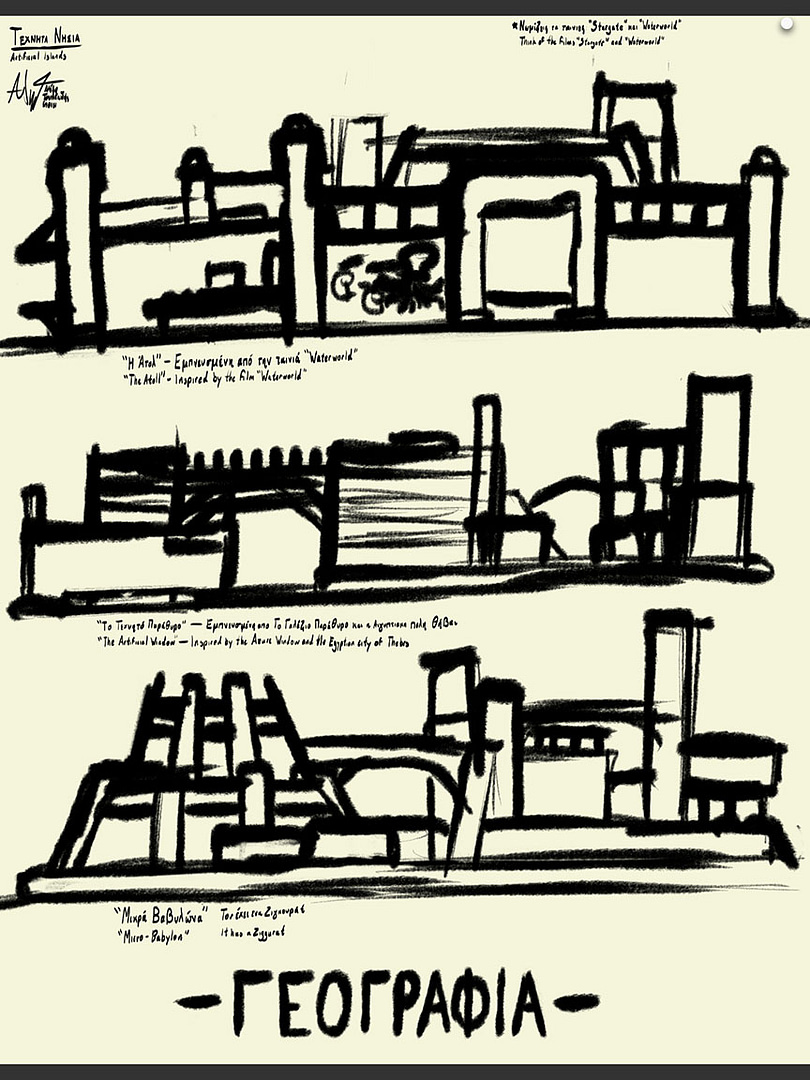
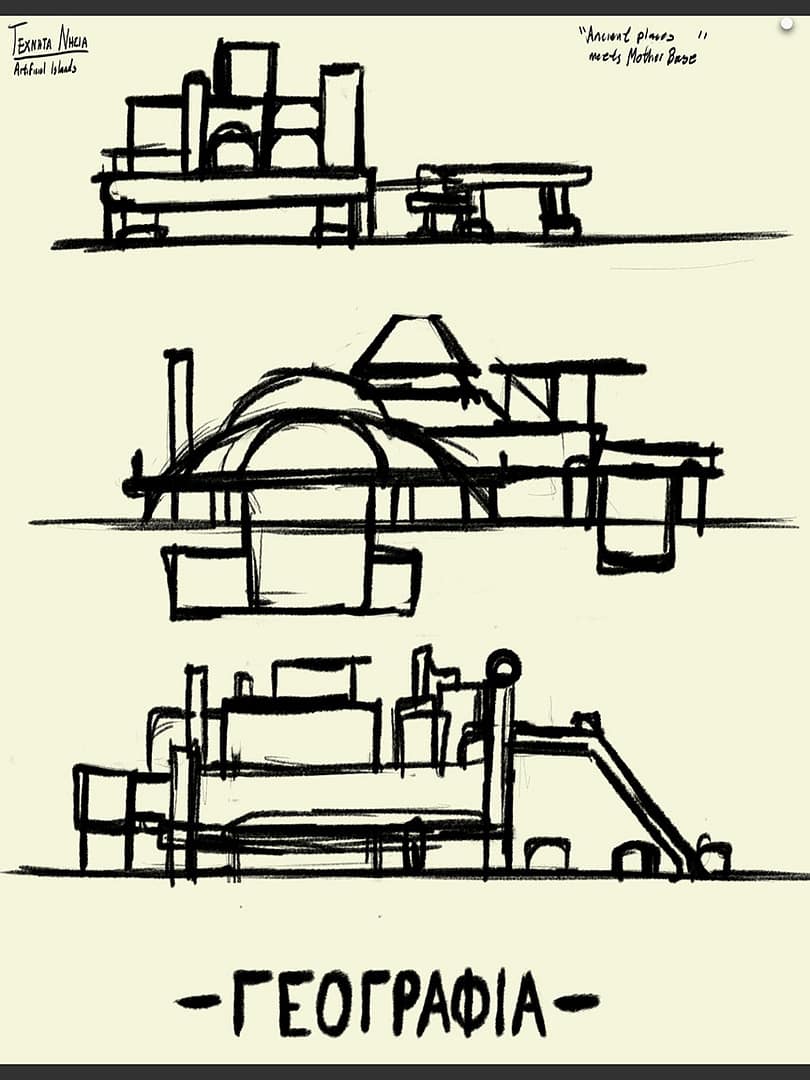
The Fish Market
The fish market was drawn to create and provide conceptual context to establish what kind of world Neibara was and how the Naukratis civilization functioned as a civilization.
The fish shop takes visual inspiration from street market shops (souqs) in the Middle East and North Africa and artistic renderings of street markets in Ancient Greece and the Roman Empire.
NOTE: The glyphs written in the concept is an older iteration of the Wanakti glyphs.
